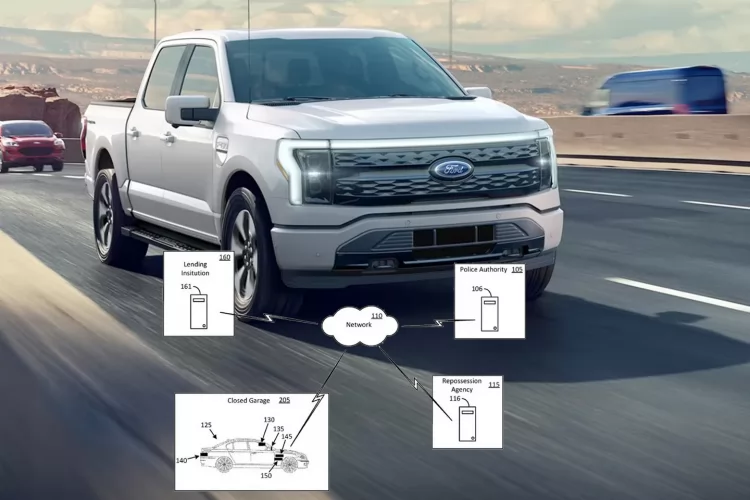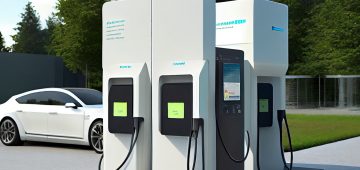Many vehicle owners like you are witnessing the shift from traditional gasoline-powered machines to electric vehicles (EVs), which are reshaping auto maintenance practices. As you navigate this transition, you’ll find that EVs require less frequent servicing compared to their fossil fuel counterparts, significantly reducing mechanical complexity and overall maintenance costs. Additionally, with fewer moving parts and no oil changes, you’re embracing a greener, cleaner future for your vehicle upkeep. This blog post will guide you through the evolving landscape of auto maintenance as we investigate into the impact of electric vehicles on your routine care and service.
Key Takeaways:
- Reduced Maintenance Needs: Electric vehicles (EVs) have fewer moving parts compared to traditional gasoline vehicles, resulting in lower maintenance requirements.
- Focus on Software and Battery Care: With the rise of EVs, auto maintenance is shifting towards software updates and battery management, emphasizing the importance of technology in vehicle upkeep.
- Environmental Impact: Transitioning to electric vehicles supports a sustainable future by reducing emissions, hence promoting a greener approach to auto maintenance and usage.
The Shift to Electric Vehicles
Overview of Electric Vehicle Technology
After years of gradual development, electric vehicle (EV) technology has reached a point where it presents a viable alternative to traditional gasoline-powered vehicles. Electric vehicles operate using one or more electric motors, powered by rechargeable battery packs rather than internal combustion engines. This shift not only reduces your vehicle’s reliance on fossil fuels but also contributes to a more sustainable future. The key components of EVs include the electric motor, battery, and regenerative braking systems, all designed to maximize efficiency and performance.
Additionally, advancements in battery technology, such as lithium-ion batteries, have dramatically improved the range and charging capabilities of EVs. Many modern electric vehicles now boast ranges exceeding 300 miles on a single charge, alleviating concerns many consumers had about “range anxiety.” As charging infrastructure expands with faster-charge options, you may find incorporating an electric vehicle into your lifestyle more convenient than ever.
Market Trends and Adoption Rates
Electric vehicle adoption rates are on the rise worldwide, driven by growing consumer awareness and favorable government policies. Many countries are setting ambitious targets for phasing out internal combustion engine vehicles, while automakers are ramping up national production of EVs. This trend is not just a passing fad; increasingly, you can find a diverse array of electric models across all vehicle segments, from compact cars to SUVs, allowing you to choose what fits your needs best.
Electric vehicle sales increased dramatically in recent years, with global sales surpassing 6 million units in 2021 alone, representing a significant percentage of total auto sales. Plus, as prices for electric vehicles continue to fall and charging infrastructure expands, you are likely to see even more consumers making the switch to EVs. Many financial incentives, including tax credits and rebates, further encourage adoption, making it a more appealing option for your next vehicle purchase.
Changing Maintenance Practices
Even as the automotive industry transitions towards electric vehicles (EVs), traditional maintenance practices are evolving to keep pace. As an owner of an electric vehicle, you’ll find that the frequency and type of maintenance needed differs significantly from what you might expect with a gasoline-powered car. The shift to electric drives not only changes how you maintain your vehicle but also introduces new practices that can enhance its lifespan and performance.
Comparison of Electric and Traditional Vehicle Maintenance
Any discussion about vehicle maintenance must start with a comparison between electric and traditional vehicles. Here’s a breakdown of key differences in their maintenance needs:
| Maintenance Aspect | Traditional Vehicles | Electric Vehicles |
|---|---|---|
| Oil Changes | Required every 3,000 to 5,000 miles | No oil changes needed |
| Brake Maintenance | Frequent, due to wear and tear | Less frequent, regenerative braking minimizes wear |
| Battery Replacement | N/A | Optional but substantial if needed |
| Fluid Levels | Regular checks required for various fluids | Minimal checks, primarily coolant |
The Role of Software and Diagnostics
Traditional vehicle maintenance often revolves around mechanical know-how and manual checks, but the advent of EVs has redefined this approach. Embedded software in electric vehicles plays a key role in diagnostics, helping you troubleshoot issues quickly and efficiently. You may find that routine maintenance is complemented by app-based systems that provide alerts or reminders for necessary service, allowing for proactive care rather than reactive repairs.
In fact, maintaining an electric vehicle depends heavily on software updates and diagnostics that can enhance performance and fix problems without the need for extensive physical repairs. As the technology evolves, your ability to diagnose and address issues right from your smartphone can drastically simplify the maintenance process.
Battery Maintenance and Longevity
Any EV owner must understand that the battery is one of the most significant components, affecting both performance and longevity. Regular monitoring of your battery’s condition can help extend its life, ensuring that you gain maximum efficiency from your electric vehicle. Features like battery management systems continuously monitor temperature, voltage, and charge cycles to help maintain optimal health.
Maintenance of your EV’s battery is often less labor-intensive than you might expect, but its importance can’t be overstated. Proper charging habits and avoidance of extreme temperatures can greatly enhance its lifespan, ultimately preserving your investment and ensuring reliability on the road.
Environmental Impact
Not only are electric vehicles (EVs) revolutionizing auto maintenance, but they are also making a significant mark on our environment. Transitioning from gasoline-powered cars to electric alternatives presents an immense opportunity to reduce pollution and promote sustainable practices. By understanding the various impacts, you can appreciate the profound changes that EVs bring to the automotive industry.
Reduction in Emissions
Above all, one of the most notable environmental benefits of EVs is their potential to reduce greenhouse gas emissions. Traditional internal combustion engines emit harmful pollutants, including carbon dioxide (CO2), which contribute to climate change. In contrast, EVs operate on electricity, allowing you to drive with cleaner energy sources that emit little to no carbon when charged from renewable resources. Even in regions relying on fossil fuels for electricity, studies show EVs still produce fewer emissions over their lifetime, considering the decrease in tailpipe pollutants.
Furthermore, as the grid becomes increasingly powered by renewable energy, the emissions associated with EV charging will further decline, enhancing their environmental profile. You can take comfort in knowing that your choice to drive an electric vehicle actively contributes to reducing air pollution, thereby improving public health and promoting a cleaner atmosphere.
Sustainability in Battery Production
Above the environmental benefits of operating an EV, it’s important to examine the sustainability of its components, particularly lithium-ion batteries. Manufacturing these batteries can result in significant environmental impacts due to the extraction of raw materials such as lithium, cobalt, and nickel. However, advancements in battery technology are underway, focusing on reducing dependency on scarce materials and enhancing recycling processes. Manufacturers are investing in sustainable practices, which not only lowers the ecological footprint but also makes it economically viable for you.
Even with current challenges, many companies are exploring alternative materials and methods in battery production. Innovations like solid-state batteries, which have the potential to use less harmful resources, are emerging. This shift can improve battery efficiency and longevity, allowing you to benefit from advancements in technology that emphasize both performance and environmental responsibility.
Recycling and Second Life for EV Batteries
About the recycling side of electric vehicles, it’s vital to highlight the potential solutions for the lifecycle of EV batteries. As the adoption of EVs increases, the question surrounding battery disposal becomes more pressing. Effective recycling programs and strategies can reclaim critical materials from used batteries, resulting in less waste and promoting a circular economy where resources are reused rather than discarded. By participating in such initiatives, you can help ensure that the metals and materials used in your vehicle are thoughtfully repurposed.
The importance of establishing robust recycling systems can’t be overstated. Not only does this process recover valuable materials, but it also minimizes environmental harm associated with mining new resources. Additionally, EV batteries can find a second life in energy storage systems, helping to support renewable energy integration and improve grid reliability. This dual-purpose use allows you to embrace sustainability in your transportation and energy practices, fostering a future that benefits both you and the planet.
Conclusion
Considering all points, the transition from traditional combustion engines to electric vehicles (EVs) is not only redefining the way you think about transportation but also revolutionizing auto maintenance practices. As you shift from grease-covered tools and oil changes to extensive battery systems and software updates, you will find that maintaining your electric vehicle could be more straightforward and often less frequent. With fewer moving parts, EVs require less routine servicing, which can lead to lower maintenance costs and a more efficient use of your time and resources.
Moreover, the technology driving these electric vehicles is advancing rapidly, encouraging a shift toward greener practices that can align with your personal values on sustainability. You’ll likely discover that technology-driven diagnostics and software upgrades are now key components of auto maintenance, enhancing your overall ownership experience. Embracing electric vehicles not only provides you with an opportunity to reduce your carbon footprint but also positions you at the forefront of an automotive evolution that prioritizes innovation and efficiency. This transformation offers exciting possibilities, allowing you to enjoy a smoother, quieter ride while contributing to a more sustainable future.
Q: How do electric vehicles (EVs) differ in maintenance compared to traditional gasoline vehicles?
A: Electric vehicles have significantly different maintenance needs when compared to traditional gasoline vehicles. One of the main differences is that EVs have fewer moving parts. They do not require oil changes, fuel filters, spark plugs, or exhaust systems, which are common in combustion engine vehicles. Instead, the key components of an EV that require attention are the battery, electric motor, and regenerative braking system. Regular checks may include monitoring the battery health, ensuring the charging system functions properly, and inspecting the brake fluid and tires. Overall, this could lead to less frequent maintenance and potentially lower costs over time.
Q: What impact do electric vehicles have on the auto maintenance industry?
A: The rise of electric vehicles is reshaping the auto maintenance industry significantly. With the shift from traditional vehicles to EVs, there is a growing demand for technicians who are trained specifically in electric vehicle technology. This has led to the development of specialized training programs and certifications for mechanics to understand electric drivetrains, battery management systems, and high-voltage safety protocols. Additionally, the reduction in the complexity of maintenance for EVs may also mean that traditional repair shops will need to adapt their services or risk losing customers to those equipped to handle electric vehicle maintenance.
Q: How can EV owners maintain their vehicles for optimal performance?
A: To optimize performance and longevity of electric vehicles, owners should follow a few key maintenance practices. Regularly checking the battery status using onboard diagnostics or manufacturer apps is important to ensure it is healthy and charging efficiently. Tire pressure and tread depth should be monitored frequently, as EVs can experience different wear patterns due to their weight distribution. Additionally, keeping software updated—many EVs receive over-the-air updates to improve functionality—is vital for maintaining performance. Lastly, it’s beneficial to consult the vehicle’s manual for specific maintenance intervals recommended by the manufacturer, even though certain services may be less frequent compared to traditional vehicles.



